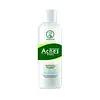What's inside
What's inside
 Key Ingredients
Key Ingredients

 Benefits
Benefits

 Concerns
Concerns

 Ingredients Side-by-side
Ingredients Side-by-side

Water
Skin ConditioningAlcohol
AntimicrobialButylene Glycol
HumectantZinc Oxide
Cosmetic ColorantSuccinic Acid
BufferingDisodium Succinate
MaskingO-Cymen-5-Ol
AntimicrobialMenthol
MaskingDisodium EDTA
Chondrus Crispus Extract
Skin Conditioning3-O-Ethyl Ascorbic Acid
Skin ConditioningPhenoxyethanol
PreservativeAloe Barbadensis Leaf Juice
Skin ConditioningPropylene Glycol
HumectantChlorphenesin
AntimicrobialHectorite
AbsorbentSodium Dehydroacetate
PreservativeAsiaticoside
AntioxidantCitric Acid
BufferingMadecassic Acid
Skin ConditioningAsiatic Acid
Skin ConditioningWater, Alcohol, Butylene Glycol, Zinc Oxide, Succinic Acid, Disodium Succinate, O-Cymen-5-Ol, Menthol, Disodium EDTA, Chondrus Crispus Extract, 3-O-Ethyl Ascorbic Acid, Phenoxyethanol, Aloe Barbadensis Leaf Juice, Propylene Glycol, Chlorphenesin, Hectorite, Sodium Dehydroacetate, Asiaticoside, Citric Acid, Madecassic Acid, Asiatic Acid
Water
Skin ConditioningPropanediol
SolventGlycerin
HumectantButylene Glycol
HumectantCarbomer
Emulsion StabilisingSilica
AbrasiveDisodium Succinate
MaskingPotassium Hydroxide
BufferingMethylparaben
PreservativePhenoxyethanol
PreservativeSuccinic Acid
BufferingDisodium EDTA
Polysorbate 20
EmulsifyingStyrene/Vp Copolymer
Xanthan Gum
EmulsifyingBetaine
HumectantSodium Chloride
MaskingAscorbyl Glucoside
AntioxidantArginine
MaskingMenthol
MaskingMagnesium Aspartate
Skin ConditioningZinc Gluconate
Skin ConditioningMentha Arvensis Leaf Oil
MaskingPropylene Glycol
HumectantZinc Hydrolyzed Hyaluronate
HumectantCalcium Chloride
AstringentPotassium Chloride
Copper Gluconate
Skin ConditioningRosmarinus Officinalis Leaf Oil
MaskingEucalyptus Globulus Leaf Oil
PerfumingAcrylic Acid
Sorbic Acid
PreservativeCoix Lacryma-Jobi Ma-Yuen Seed Extract
Skin ConditioningWater, Propanediol, Glycerin, Butylene Glycol, Carbomer, Silica, Disodium Succinate, Potassium Hydroxide, Methylparaben, Phenoxyethanol, Succinic Acid, Disodium EDTA, Polysorbate 20, Styrene/Vp Copolymer, Xanthan Gum, Betaine, Sodium Chloride, Ascorbyl Glucoside, Arginine, Menthol, Magnesium Aspartate, Zinc Gluconate, Mentha Arvensis Leaf Oil, Propylene Glycol, Zinc Hydrolyzed Hyaluronate, Calcium Chloride, Potassium Chloride, Copper Gluconate, Rosmarinus Officinalis Leaf Oil, Eucalyptus Globulus Leaf Oil, Acrylic Acid, Sorbic Acid, Coix Lacryma-Jobi Ma-Yuen Seed Extract
Ingredients Explained
These ingredients are found in both products.
Ingredients higher up in an ingredient list are typically present in a larger amount.
Butylene Glycol (or BG) is used within cosmetic products for a few different reasons:
Overall, Butylene Glycol is a safe and well-rounded ingredient that works well with other ingredients.
Though this ingredient works well with most skin types, some people with sensitive skin may experience a reaction such as allergic rashes, closed comedones, or itchiness.
Learn more about Butylene GlycolDisodium EDTA plays a role in making products more stable by aiding other preservatives.
It is a chelating agent, meaning it neutralizes metal ions that may be found in a product.
Disodium EDTA is a salt of edetic acid and is found to be safe in cosmetic ingredients.
Learn more about Disodium EDTAWe don't have a description for Disodium Succinate yet.
Menthol is a compound found in mint plants, such as peppermint. In its pure form, it is a clear crystalline substance.
Menthol is known for its cooling sensation; however, the cooling is actually from your skin being sensitized. Menthol can worsen rosacea. We recommend speaking with a professional if you have concerns.
Menthol also has antimicrobial properties.
Learn more about MentholPhenoxyethanol is a preservative that has germicide, antimicrobial, and aromatic properties. Studies show that phenoxyethanol can prevent microbial growth. By itself, it has a scent that is similar to that of a rose.
It's often used in formulations along with Caprylyl Glycol to preserve the shelf life of products.
Propylene Glycol is an odorless, colorless liquid. As a humectant, it helps skin retain moisture. It also aids in delivering active ingredients.
Another role of this ingredient is preventing a product from melting or freezing. Propylene glycol also adds antimicrobrial properties to a product, elongating product lifespan.
This ingredient is considered an organic alcohol and commonly added into both cosmetics and foods.
Those with sensitive skin or conditions may develop a rash when using this ingredient.
Learn more about Propylene GlycolSuccinic acid is an odorless white powder. It is naturally found in our bodies but can also be derived from living organisms.
Succinic acid is water-soluble. The pH level of this ingredient is between 4.2 and 5.6.
While succinic acid posesses antimicrobial, antioxidant, and anti-inflammatory properties, these properties have not been studied in skincare products.
Fun fact: Succinic acid was known as the 'spirit of amber' in the past. This is because it used to be derived from distilling amber.
Learn more about Succinic AcidWater. It's the most common cosmetic ingredient of all. You'll usually see it at the top of ingredient lists, meaning that it makes up the largest part of the product.
So why is it so popular? Water most often acts as a solvent - this means that it helps dissolve other ingredients into the formulation.
You'll also recognize water as that liquid we all need to stay alive. If you see this, drink a glass of water. Stay hydrated!
Learn more about Water